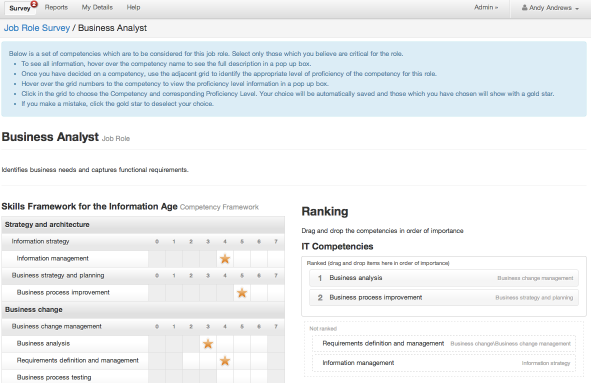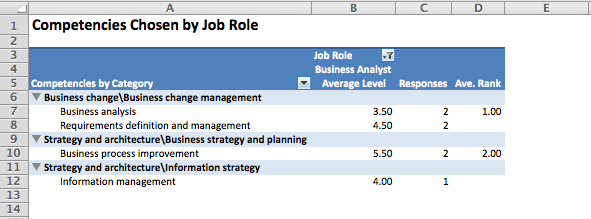There are a number of ways of gathering competency data in order to identify the competencies and proficiency levels required for a person to be successful in their job.
One effective way is by working with people who hold or have previously held the job. More often than not, we are interested in identifying ‘successful’ behaviours, so it makes sense to identify people who have been successful in the job, even if they have now moved on to another role within the organisation. It can also be useful to receive feedback from the managers of the successful incumbents.
What are some of the ways in which we can capture valuable input from the aforementioned audience for the job competency-profiling project?
- Behavioural Interviews
- Job Role Analysis Interviews
- Job Role Surveys
The use of Behavioural Interviews in order to capture demonstrated, successful behavours; to group and analyse the results and write competencies or match competencies from a competency dictionary is an approach that is widely known. Also the use of Job Role Analysis Interviews to capture job responsibilities, tasks and identify relevant skills is well documented.
Online Job Role Surveys
In combination with these approaches, at Lexonis, we have we have had increasing success with using our online tools to capture feedback from job role holders, managers and business leaders from across the organisation. This approach works on the premise that we have already identified the pool of competencies required for the job family (we use online tools for this purpose too) and we would like to capture feedback on which specific competencies/levels are required for each job so that we can model the organisation’s Job Competency Profiles. The data that we capture using our online tools helps us to answer the following questions:
- Which competencies did most people select for the specified job?
- What proficiency levels did they choose and what was the average proficiency level?
- What was the priority ranking for each competency chosen i.e. how important did people rate the competency for the job?
Figure 1 provides an example of the interface that we use to capture the feedback from job:

Figure 1
For this approach to work the interface must be very simple to use – ours is. The user reads the instructions provided and for the specified job (Business Analyst) they can review the descriptions of the competencies and behavours, select them if they are deemed critical to success for the job; they can select the proficiency level and once they have done so, they rank the competencies according to their importance for the job e.g. Business Analysis has been chosen as the top ranking competency for the Business Analyst job.
Using the Results
The results (shown in Figure 2) are used by our consultants to analyse which competencies were chosen, what the average level of proficiency was and how important the competency is rated for the job. Remember, this feedback can be captured from one or more job role holders, managers and business leaders. The sample participants are well chosen beforehand and provided with very clear and specific directions.

Figure 2
Conclusion
One of the great advantages of this approach is that it is possible to capture feedback from employees across a widely dispersed organisation. At Lexonis we have used this approach to include employees across the globe and to incorporate input from various countries and regions. Another advantage is that the service is very easy to use and helps employees to become familiar with the competencies that will potentially be associated with their jobs for assessment purposes. Finally – and this should not be under-estimated –this approach helps to build buy-in and consensus for your competency initiative.
If you are interested in learning from our experience of using such a job role survey approach or indeed of using our competency profiling tools please feel free to contact us.




